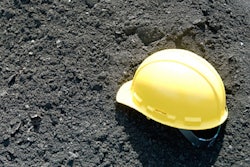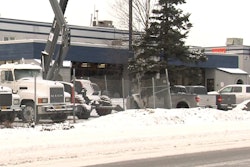Take a look at the photo and see if you can name the OSHA trench safety violations.
There’s a man in the trench – look closely, because you can barely see him. Then, there are the eight men surrounding the newly excavated hole, putting pressure on the excavation face. There’s no sloping, shielding or shoring—nothing to hold the soil back if it ever started to move.
There’s also no OSHA violation.
Because these workers are employed by a city, not a private contractor, they don’t come under OSHA, an exemption dating back to the original 1970 Occupational Safety and Health Act. Instead, the safety of governmental workers is covered by a hodgepodge of state laws.
According to safety consulting firm J. J. Keller, 21 states, plus Puerto Rico, have adopted state plans for both public and private entities. These programs, which have received the blessing of OSHA, are staterun, but jointly funded by the federal and state government. Another five states, plus the Virgin Islands, have state plans that cover just the public sector.
It gets more complicated. While they do not run state plans, six states (Montana, Ohio, Oklahoma, Rhode Island, West Virginia and Wisconsin) have what safety consultant BLR calls “comprehensive protections” for public sector workers that are at least as strict as OSHA regs.
The level of adherence to OSHA regs for public workers then starts to dwindle, with six states – Arkansas, Idaho, Kansas, Massachusetts, New Hampshire and Pennsylvania – adopting some, but not all, of the OSHA rules.









